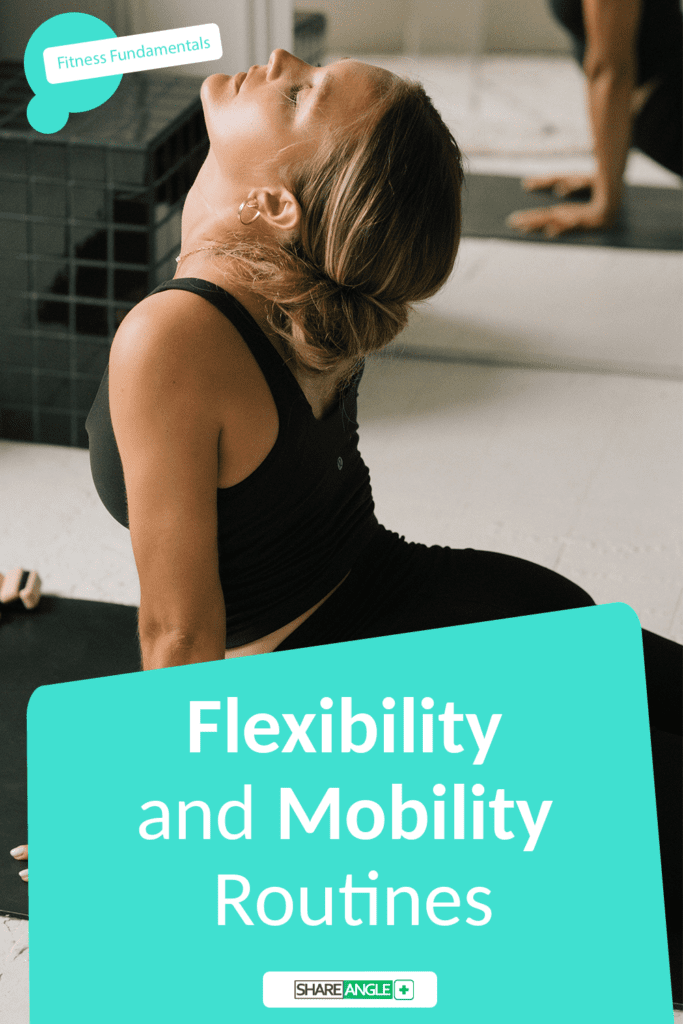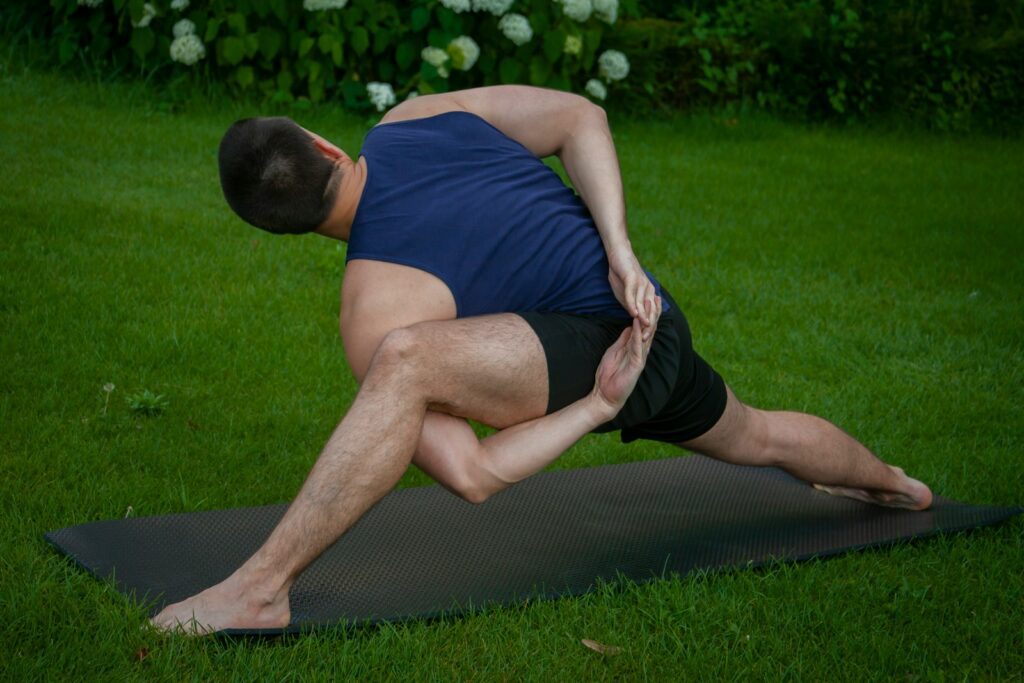
Flexibility and mobility are key components of overall physical health and wellness. Flexibility refers to the ability of your muscles and joints to move through a full range of motion, while mobility refers to your ability to move freely and easily without restrictions or pain.
In this article, we will explore the difference between flexibility and mobility, as well as the benefits of incorporating flexibility and mobility routines into your regular exercise regimen. We will also discuss common mistakes to avoid, examples of effective routines, and how often you should be incorporating these exercises into your fitness routine.
Whether you’re a seasoned athlete or just starting out on your fitness journey, understanding and improving your flexibility and mobility can have a significant impact on your overall health and performance.
What Is Flexibility and Mobility?

Flexibility and mobility refer to the ability of the body to move joints and muscles through their full range of motion.
Stretching exercises are essential for physical performance and injury prevention. They improve flexibility, allowing muscles and joints to move freely. Incorporating mobility routines into workouts can also enhance posture, balance, and coordination.
Flexibility and mobility are crucial for overall health and well-being. They make daily activities easier and reduce the risk of musculoskeletal problems.
What Is the Difference Between Flexibility and Mobility?
Flexibility focuses on the length of muscles and their ability to stretch, while mobility pertains to the range of motion of a joint or a group of joints.
Flexibility and mobility are two key components of physical performance. While flexibility refers to the muscles’ ability to stretch and bend without harm, mobility focuses on the joints’ freedom of movement. Both are essential for optimal movement and injury prevention. It’s crucial to maintain a balance between the two for improved physical functionality.
Having good flexibility allows the muscles to move through their full range of motion, while proper joint mobility enables the body to execute movements effectively. Understanding the difference between these two aspects is crucial for enhancing overall movement and preventing injuries. By developing and maintaining flexibility and mobility, you can improve your physical performance and overall well-being.
Why Is Flexibility and Mobility Important?
Flexibility and mobility play a crucial role in enhancing physical performance, preventing injuries, and supporting overall well-being.
Flexibility and mobility are crucial for allowing the body to move freely and efficiently. By incorporating exercises that specifically target these areas, individuals can improve their posture, increase their range of motion, and enhance their coordination.
Not only can this have a positive impact on daily activities, but it can also improve athletic performance. Additionally, flexibility and mobility training can help alleviate muscle tightness and reduce the risk of muscle strains and joint pain, making them essential components of a well-rounded fitness routine.
What Are the Benefits of Flexibility and Mobility?
The benefits of improved flexibility and mobility extend to various aspects such as enhanced athletic performance, graceful movements in dance, and maintaining functional independence in seniors.
For athletes, increased flexibility leads to improved agility, reduced risk of injury, and enhanced range of motion, all of which are essential for peak performance.
Dancers benefit from enhanced mobility, allowing them to execute complex movements with fluidity and grace, while also reducing the risk of strain or injury.
Seniors enjoy increased flexibility and mobility, which helps them carry out daily tasks with greater ease, maintain better posture, and reduce the risk of falls or other mobility-related issues.
How Can You Improve Flexibility and Mobility?
Improving flexibility and mobility involves a variety of techniques, drills, programs, and exercises designed to enhance joint movement and muscle flexibility.
To improve flexibility and mobility, there are various methods that can be incorporated into a fitness routine. These may include dynamic stretching, which involves moving the muscles through their full range of motion, as well as static stretching to improve muscle elasticity.
Additionally, practices such as yoga and Pilates can also aid in increasing flexibility and core strength. Resistance training using bands or weights, along with foam rolling and mobility drills, can also play a crucial role in enhancing overall flexibility and mobility.
By consistently integrating these diverse approaches, individuals can optimize their physical performance and reduce the risk of injuries. So, it’s important to incorporate a variety of stretching and strengthening exercises into your fitness routine.
Stretching
Stretching is a fundamental practice for improving flexibility and mobility, involving various exercises that target different muscle groups and joints.
Regular stretching has numerous benefits, including increasing joint range of motion, reducing injury risk, and relieving muscle tension. To achieve these benefits, incorporate dynamic stretching, which involves moving body parts through a full range of motion, and static stretching, where positions are held for a period of time. These exercises can improve muscle flexibility and joint mobility, making everyday movements more comfortable. Additionally, regular stretching can enhance blood circulation, promoting overall well-being and physical performance.
Foam Rolling
Foam rolling is an effective method to improve flexibility and mobility by relieving muscle tightness and enhancing blood flow to the targeted areas.
This self-myofascial release technique involves using a foam roller to apply pressure to specific points on the body, helping to release tension and improve range of motion.
Incorporating foam rolling into your routine can also aid in reducing the risk of injury by promoting better muscle function and increasing joint flexibility.
When combined with stretching exercises, foam rolling can significantly contribute to muscle relaxation, improved joint movement, and better overall performance in various physical activities.
Yoga
Yoga offers a holistic approach to improving flexibility and mobility through a combination of postures, breathing techniques, and relaxation exercises.
Yoga involves a wide range of movements and stretches that target different muscle groups and joints. This promotes enhanced flexibility and mobility.
Specific yoga poses, such as Downward Facing Dog, Cobra, and Pigeon pose, help stretch and lengthen the muscles, leading to improved range of motion. The controlled breathing techniques used in yoga also aid in relaxing the muscles and reducing tension, enhancing overall flexibility and joint function.
In addition, the practice of yoga can contribute to increased physical performance and reduced risk of injury by conditioning the muscles and improving flexibility.
Pilates
Pilates is a comprehensive exercise program that focuses on enhancing flexibility, core strength, and overall body coordination for improved mobility.
Pilates utilizes controlled movements and breathing techniques to improve joint flexibility and muscle coordination. One exercise, the “Mermaid” stretch, targets the spine, hips, and shoulders for increased range of motion. Another exercise, “Rolling Like a Ball,” focuses on balance and control while enhancing spinal flexibility. These exercises, among others in the Pilates repertoire, promote overall physical well-being by improving flexibility and mobility.
Resistance Training
Incorporating resistance training into a flexibility and mobility program helps build strength, stability, and balance, contributing to enhanced overall physical performance.
Resistance training is essential for improving joint flexibility and increasing range of motion, reducing the risk of injury. Exercises like squats, lunges, and deadlifts target major muscle groups and promote functional movement patterns.
Including resistance bands and bodyweight exercises can further enhance flexibility and mobility while also strengthening muscles. By incorporating these techniques, individuals can achieve a more balanced and agile body.
What Are Some Common Mistakes in Flexibility and Mobility Training?
To optimize readability and SEO, it’s advisable to break paragraphs into concise, easily digestible sentences. Add
tags to the text given and aim for a maximum of two sentences per
tag section, allowing multiple
tags. This approach enhances user experience and search engine indexing. Also, add tags to important keywords and phrases, and tags for quotes.
Several common mistakes in flexibility and mobility training include inadequate warm-up, overstretching, and neglecting strength training, which can hinder progress and increase the risk of injury.
Many errors in training can be attributed to a lack of knowledge about how the body works and the significance of a well-rounded approach. Skipping warm-up exercises can cause stiffness and limit range of motion, while excessive stretching can lead to muscle strain or tears. Neglecting strength training can create imbalances that hinder flexibility and mobility. Therefore, it’s essential to incorporate dynamic warm-ups, targeted stretches, and strength training to improve flexibility and mobility without risking injury or setbacks.
Not Warming Up Properly
Failing to warm up adequately before flexibility and mobility training sessions increases the risk of injury and limits the effectiveness of subsequent exercises.
Inadequate warm-up can lead to decreased blood flow to the muscles, reducing flexibility and increasing the likelihood of strains and sprains.
Without a proper warm-up, the body may struggle to perform at its optimal level, hindering progress in flexibility and mobility.
A thorough warm-up not only prepares the body for the physical demands of the upcoming workout but also helps activate key muscles, enhancing overall exercise performance and reducing the chance of injury.
Overstretching
Overstretching can lead to decreased muscle strength and potential injury, counteracting the intended benefits of flexibility and mobility training.
This occurs because excessive stretching can cause the muscles to become overstretched and weakened, reducing their ability to generate power and support the body during physical activities.
As a result, individuals may experience compromised performance and an increased risk of strains, sprains, or even more severe musculoskeletal injuries.
It’s important to strike a balance in flexibility and mobility training to avoid the detrimental consequences of overstretching, ensuring that the muscles remain strong, resilient, and less prone to injury.
Not Including Strength Training
Neglecting strength training in flexibility and mobility routines can compromise muscle balance, coordination, and overall physical performance.
This omission can lead to muscle imbalances, reduced stability, and decreased range of motion, impacting the body’s ability to move effectively and efficiently.
Neglecting strength training may hinder the development of essential motor skills and limit the body’s capability to generate power and strength. Over time, this can result in decreased functional mobility and an increased risk of injury during physical activities.
Therefore, integrating strength training into flexibility and mobility routines is crucial for achieving a well-rounded and capable physical performance.
How Often Should You Do Flexibility and Mobility Routines?
The frequency of flexibility and mobility routines can vary based on individual needs, with options for daily, every other day, or weekly training sessions to maintain and improve overall physical performance.
Daily flexibility and mobility routines can be beneficial for individuals aiming to actively address specific mobility restrictions or recover from intense physical activities.
On the other hand, every other day sessions provide sufficient recovery time for the muscles and joints, striking a balance between consistent practice and adequate rest.
Weekly training sessions, while less frequent, still contribute to overall flexibility maintenance and can suit those with lighter activity levels or those focusing on complementary training alongside other physical activities.
Daily
Engaging in flexibility and mobility routines on a daily basis can promote consistent improvement in joint flexibility, muscle mobility, and overall physical health.
These routines can help enhance the range of motion in your joints, decrease the risk of injuries, and improve posture.
Daily flexibility and mobility exercises contribute to better blood circulation and can alleviate muscle tension and soreness. They also aid in preventing age-related stiffness and maintaining a more active lifestyle as you grow older.
By making these routines a part of your daily life, you can experience improved physical performance and overall well-being.
Every Other Day
Alternating flexibility and mobility routines every other day allows for adequate recovery and adaptation, promoting sustained progress and reduced risk of overtraining.
This approach enables the body to recuperate from the stress of training, preventing burnout and decreasing the likelihood of injury.
By integrating these routines into your workout schedule, you are constantly challenging your muscles and enhancing their flexibility and range of motion, which is crucial for overall performance.
The regular alternation of these routines reinforces the body’s capacity to adapt, leading to improved athletic abilities and reduced muscle soreness, ultimately resulting in better long-term health and fitness outcomes.
Weekly
Engaging in flexibility and mobility routines on a weekly basis provides a structured approach to physical improvement, allowing for adequate rest and potential progression over longer periods.
Consistently incorporating routines into your weekly schedule can help your body adapt and become more resilient, promoting overall health and longevity.
Prioritizing flexibility and mobility each week can lead to enhanced recovery, reduced risk of injury, and improved performance in physical activities.
These routines also play a crucial role in maintaining joint health, posture, and overall body functionality, promoting sustained physical well-being over time.
What Are Some Examples of Flexibility and Mobility Routines?
Various flexibility and mobility routines cater to specific areas of the body, such as the full body, upper body, lower body, and dynamic warm-up exercises, each designed to enhance joint movement and muscle flexibility.
These routines promote overall physical well-being and can be customized to target particular muscle groups. For the full body, a routine may include stretching exercises that focus on the back, hips, and legs, while an upper body routine may incorporate shoulder and chest stretches.
Lower body routines often emphasize the hamstrings, calves, and quadriceps, aiding in improved posture and reducing the risk of injuries. Dynamic warm-ups, on the other hand, combine stretches with light cardio activities, such as high knees and leg swings, to prepare the body for more intense physical activities.
Full Body Stretch Routine
A full body stretch routine incorporates a series of exercises that target multiple muscle groups and joints, promoting overall flexibility and mobility.
To optimize readability and SEO, it’s advisable to break paragraphs into concise, easily digestible sentences. This approach enhances user experience and search engine indexing.
These exercises may include dynamic movements like arm circles, leg swings, and lunges to warm up the major muscle groups and increase blood flow. Incorporating yoga poses such as downward dog, cat-cow, and child’s pose can help stretch and relax the entire body. Stretching the hamstrings, quadriceps, calves, and shoulders individually can further enhance the overall impact on flexibility and mobility, ensuring a comprehensive stretch routine for the entire body.
Upper Body Mobility Routine
An upper body mobility routine focuses on exercises that enhance the range of motion and flexibility in the shoulders, arms, and upper back, promoting improved upper body mobility.
Incorporating specific exercises such as shoulder circles, arm swings, and thoracic spine stretches can significantly contribute to loosening tight muscles and improving overall upper body flexibility.
These exercises help to alleviate stiffness and tension in the shoulders and upper back, ultimately enhancing the ability to perform daily activities and athletic movements with greater ease and reduced risk of injury.
By prioritizing consistent engagement in upper body mobility routines, individuals can proactively support their long-term physical well-being.
Lower Body Flexibility Routine
A lower body flexibility routine encompasses exercises that improve the flexibility and mobility of the hips, legs, and lower back, contributing to enhanced lower body performance.
Targeting the hips, exercises like hip flexor stretches and hip rotations can help to increase range of motion and alleviate tightness.
For the legs, incorporating exercises such as hamstring stretches, calf stretches, and lunges can enhance flexibility and stability.
Focusing on the lower back with exercises like cat-cow stretches and seated spinal twists can lead to improved mobility and reduced stiffness.
Integrating these exercises into a comprehensive lower body flexibility routine can provide a well-rounded approach to promoting overall lower body flexibility and mobility.
Dynamic Warm-Up Routine
A dynamic warm-up routine involves a series of movement-based exercises that prepare the body for physical activity, promoting enhanced joint mobility and muscle flexibility.
Dynamic warm-ups are an essential part of physical activity, incorporating exercises like leg swings, arm circles, lunges, and high knees. These movements increase blood flow, raise core temperature, and activate the nervous system, all of which improve performance and reduce injury risk. Not only do dynamic warm-ups prepare the body, but they also enhance focus and coordination, mentally preparing individuals for their workout or sports activity. By incorporating dynamic warm-ups, individuals can optimize their physical abilities and minimize the chances of strain or injury.

